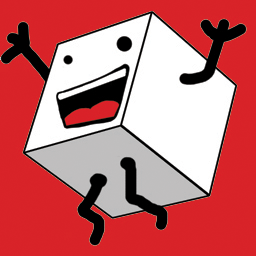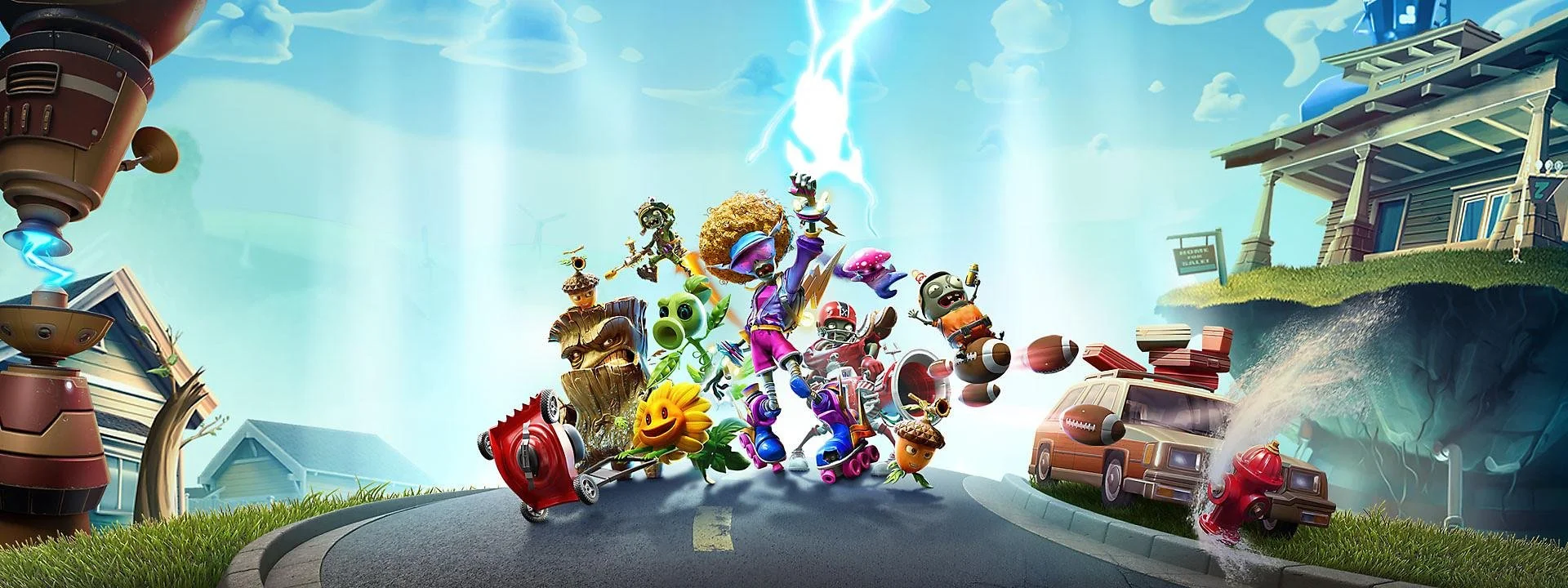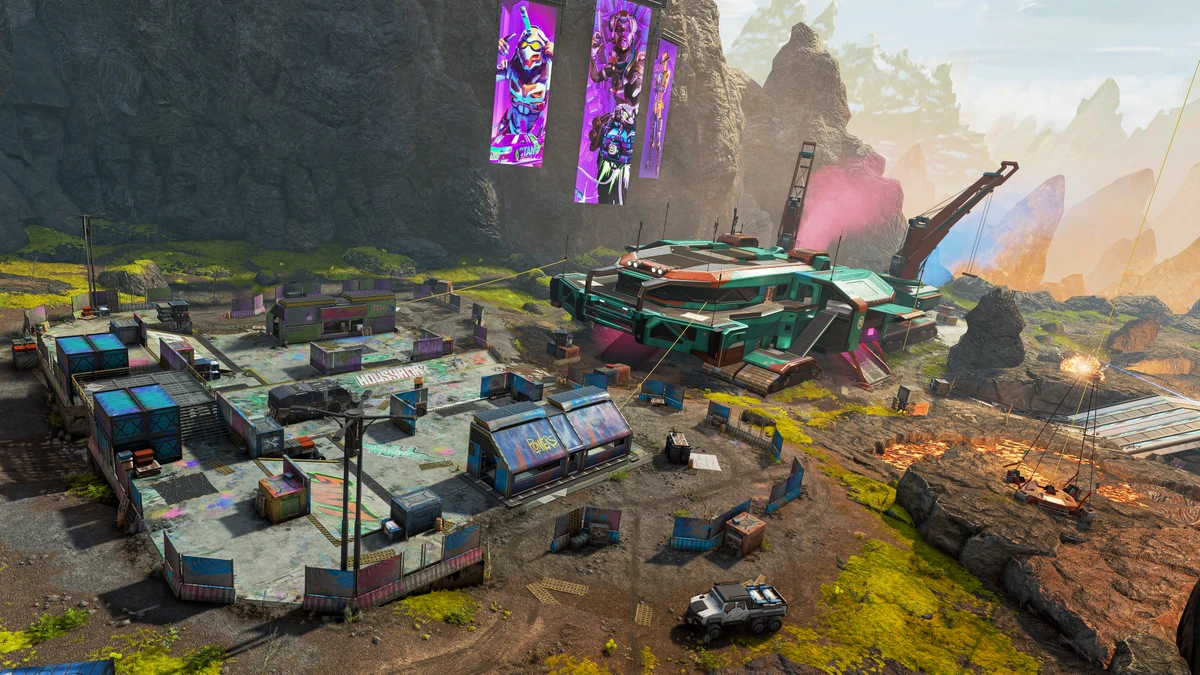PVZ: BATTLE FOR NEIGHBORVILLE //
The Game
Plants vs Zombies: Battle for Neighborville is the spiritual successor to the critically acclaimed and beloved Garden Warfare series. Quirky plants fight against goofy zombies in an all-out multiplayer suburban showdown. Introducing new characters, new maps, cooperative adventure worlds, and a huge range of whacky customization. Pick a side for the chaotic battle that will decide the fate of Neighborville. It's strategic, humorous, and packed with colorful chaos.
Role
Lead Level Designer
Candle holder for adventure sandboxes and multiplayer map development.
For me this was my swan song on the Garden Warfare series, and I had so much fun building it along side my friends on the incredible dev team. It meant a lot to me.
Key Contributions
-Directed and managed the maps team, communicated goals and gave guidance.
-Worked tightly with team to ensure game vision is upheld to the highest standard.
-Valued strong cohesion between character design and level design.
-Spearheaded design for adventure sandbox worlds and scripted their core systems.
-Designed enemy ai, mob logic, encounters, combat puzzles, and quests.
-Developed a unifying level design guide for training, best practices, and metrics.
-Ran daily team playtests with subsequent culture building feedback sessions.
ADVENTURE SANDBOXES //
Overview
Adventure Sandboxes are cooperative “open-world” zones where you can explore and discover the world at your own pace. We set out to expand upon the world map from Garden Wafare 2, the Backyard Battleground. Each one providing a new set of challenges, quests, collectibles, secrets, and rewards. As well as telling a much more in-depth narrative culminating with a huge boss fight and metriod-vania inspired world-altering key item. The sandboxes also included a secondary overarching story with the secretive Gnomes. We really wanted to go bigger.
-Town Center (Plants and Zombies)
-Weirding Woods (Zombies)
-Mount Steep (Plants)
World Design
We essentially wanted to support a large array of content and try to be as efficient as possible given our scope and time. We desired to ensure each quest, event or challenge was unique, required skill, character knowledge, and most importantly new modes of thought to complete. The worlds were broken into distinct areas each with their own target goals and connective tissue. For better or worse we formulized a template to streamline the process. Splitting content up this way also allowed us to easily divide and conquer, easily assigning multiple devs to parts of the level at different times.
Welcome Area
-Where you started, npc greeters, and getting your feet wet.
-First impression of the map before peeling back the layers.
Themed Area
-Best expression of the map’s unique mechanics and themes.
-Such as hazards, special enemies, or visuals.
Arena
-Fully functional multiplayer map that doubled as an explorative zone.
-This was an efficient way to build, we cut scope while providing mp content.
Boss Domain
-Where the world boss lived, behind a boss door locked by the map’s key item.
-Large scale and complex boss fights were something new to BFN.
Gnome Dungeons
-Secondary hidden offshoots for gnome collectables, generally behind a locked layer.
-Puzzles, combat challenges, platforming and difficult gnome bosses.
Locks and Keys
Each zone had a key item that needed to be pieced together by completing quests.
Once assembled players could use it to unlock the final layers of content in the sandbox.
The goal was, during their time exploring the world, players would encounter a high percentage of these locks. Ideally building a mental map of where to go once the key was aquired. Each key was unique and offered a different expierience for opening locks.
Mindblower (Town Center: Plants)
-A very cool looking RC Lawn Mower, that would blow the minds of zombies.
-Drive it over terrain and detonate it. Doubles up as functional a weapon.
Stink Bomb (Town Center: Zombies)
-A remoted controlled missile that let’s out stinky gas to neutralize plant locks.
-Skillfully fly it through tight corridors and break locks without crashing it first.
-Doubles as a weapon, also used to fight against the area boss.
Boombox (Weirding Woods: Zombies)
-Plays a special lullaby that puts the forest to sleep and changes the world’s state.
-Locks soften and can now be shot open, new enemies and challenges appear.
-Visually locks are the same as the boss’ weakpoints to create that association.
Harmonica (Mount Steep: Plants)
-Playing the Harmonica will attract Mouseflies that now follow you in an aura.
-Skillyfully carry them to a location locked by hard cheese, aim, fire, and watch them eat.
-Doubles as a functional weapon.
It was important to be rewarded with a new ability players had agency over. Not just a simple “use key” interaction. It was a new gameplay layer, used to complete the last challenges the world had to offer.
MOB DESIGN // TODO
Overview
Populating the zones with feel good enemy AI was no easy task.
Designing The Common Mob
Defend zones, respawning and leashing.
Combat Puzzles
I fully viewed special combat challenges as being more rewarding if there was a hidden element to uncover and overcome. Such as enemies having a shield that required a special trick to disable, or only being able to win by eliminating all enemies in close succession because they respawn. This required skill and new ways of approaching combat, which I felt was more rewarding than always shooting until they are dead. We always provided an obscure hint to set up the combat challenge.
Holes in the Roster
The biggest missing piece from the original series was a “ranged fodder enemy” aka the Halo Grunt or Doom Imp. All of our low-level enemies were melee based with a low-key conditional range attack. It wasn’t very effective at weeding out exploitative players. So we introduced the Wildflower Plant and TV-Head Zombie to round out the roster. They both had a pesky low damage projectile weapon with a large head/critical hitbox. We also added a conditional physics impulse grenade to their kit. The goal was to knock players out of exploitative spots by knocking them around. It was a perfect fit to fill the gaps in our line up.
Enemy Types
To expand on our already huge roster of enemies we created variations on each one.
This gave us the ability to use the same character assets for different purposes.
Common
-The basic loadout and kit for each enemy.
Champion (Gold Iconography)
-Increased survivability, procedural customization, more loot dropped.
-Would appear occasionally, basically a more difficult version of the same enemy.
Elite (Diamond Iconography)
-Further increased survivability, specific outfit, named enemy, special behaviors, difficult.
-Would appear on special events, can’t always be killed by conventional means.
More:
Links


